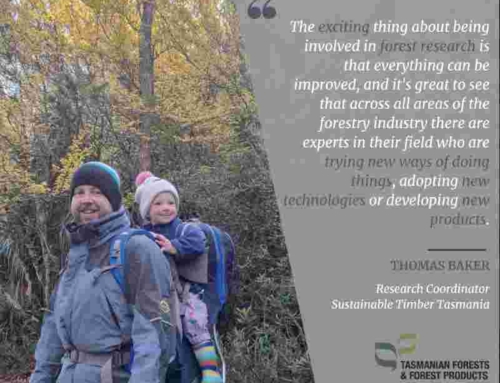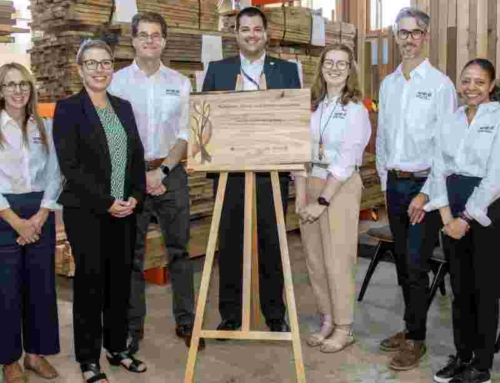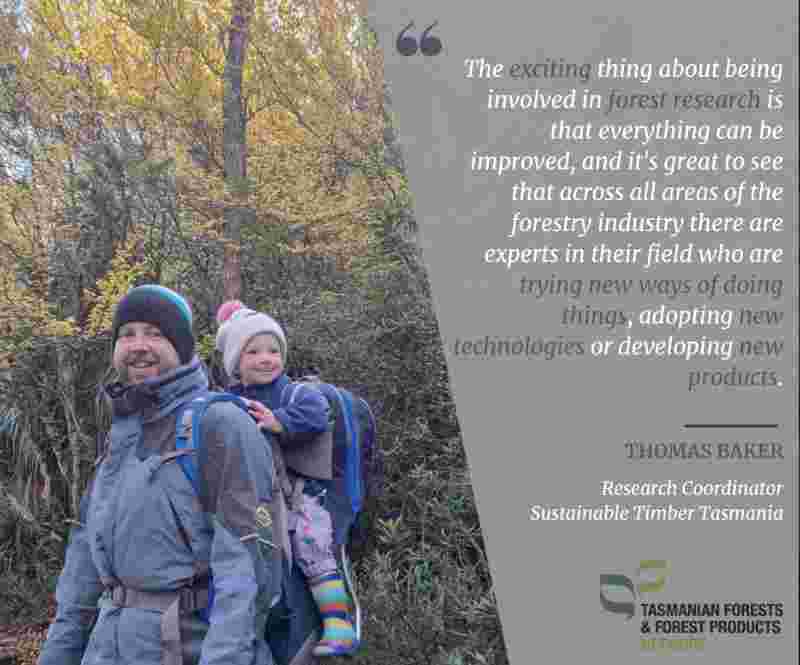What is Carbon and what’s it got to do with forestry?
Shaun Suitor, Natural Capital Manager- Sustainable Timber Tasmania
Carbon and the greenhouse effect (climate change)
The scientific community essentially agrees that the main cause of climate change is the increase in greenhouse gas (principally carbon dioxide (CO2) concentrations in the earth’s atmosphere. CO2 concentration in the atmosphere has increased by 31% since the beginning of the industrial era.
Carbon is stored in various ‘pools’ (stocks) such as forests, oceans and land, and moves between these pools. These land-based pools can absorb carbon from the atmospheric pool or emit carbon in a two-way flow. Whereas in any meaningful time frame, the fossil fuel reserves provide a one-way flow to the atmosphere from ancient reserves (as seen below).

Figure 1: the various carbon pools. Source: Edinburgh Centre for Carbon Management
The role of forests and climate change
Human emissions of greenhouse gases are dominated by the burning of fossil fuels; however, approximately a quarter of the increases in greenhouse gases in the atmosphere since pre-industrial times originate from largely the conversion of forests to non-forest (agriculture, urban or other development).
Trees absorb CO2 and convert it to stems, branches, leaves/needles, roots and eventually dead organic matter. Younger trees generally sequester carbon at a higher rate than mature trees. They also emit CO2 through vegetation breathing and decomposition or the burning of plant materials. Therefore, exchange of CO2 between forests and the atmosphere is important in the context of climate change.
In Australia, forests are also recognised as important carbon stores and contributors to greenhouse emissions abatement. Storing an estimated equivalent of over 44 billion tonnes of CO2, representing over 70 times the current annual emissions by Australia. Just as forests can be important carbon stores, they also have the potential to be large sources of greenhouse emissions.
Forest management and carbon.
The Intergovernmental Panel on Climate Change stated “Sustainable forest management can maintain or enhance forest carbon stocks, and can maintain forest carbon sinks, including by transferring carbon to wood products.”
But what does this mean? What are some ways in which forest management can impact the carbon balance?
Well, here are some examples:
- Protecting forests from deforestation: the carbon reservoir in the forests is very large, highlighting the importance of conserving keeping and expending the extent of forests.
- Planting trees: planting new forests, trees outside forests, rehabilitating degraded forests, and enriching existing forests increase the rate and quantity of carbon sequestration.
- Harvesting activities: Numerous forestry activities emit greenhouse gases. These emissions can be lessened, from actions such as using wood waste for bioenergy, through to monitoring and managing fuel usage.
- Embodied carbon in wood: when trees are harvested the majority of the carbon is transferred into harvested wood products (HWP). At the end of their service life, the vast majority of HWPs in Australia are deposited in landfill. The majority of the carbon in HWPs deposited in landfill remains undecomposed for decades if not centuries. While at the same time the forests from which they were harvested have regrown.
- Product substitution: using wood instead of materials requiring large amounts of energy during production helps fight the greenhouse effect, e.g. in replacing concrete or steel constructions by wood as frames, beams, etc. It is said that using 1m3 of timber in buildings sequesters 1 ton of CO2 for an average period of 20 years, and reduces net emissions by 0.3 t of CO2 if concrete is replaced, and 1.2 t of CO2 if steel is substituted.
- Fossil fuel substitution: Producing wood for energy purposes mitigates climate change by combining sink action with emissions reduction. Substituting fossil fuels, such as coal, natural gas, or oil by fuelwood for domestic use, electricity production, or industrial use. The expected sequestration of carbon through the growth of trees after sustainable harvest compensates for the CO2 emitted by combustion.
If you would like links to references or to know more on this topic feel free to get in contact. However, we suggest you start with this review, completed by the TFFPN’s very own Adjunct Professor Martin Moroni.
In future newsletters we will explore Carbon and Forestry further, exploring: carbon markets, carbon accounting; company carbon reporting; recent science, and government carbon initiatives (i.e. the emissions reduction fund).
Have a question, or a carbon-related topic you’d like covered? Or are you an expert in this field? Please get in touch– we’d love to hear from you.
















